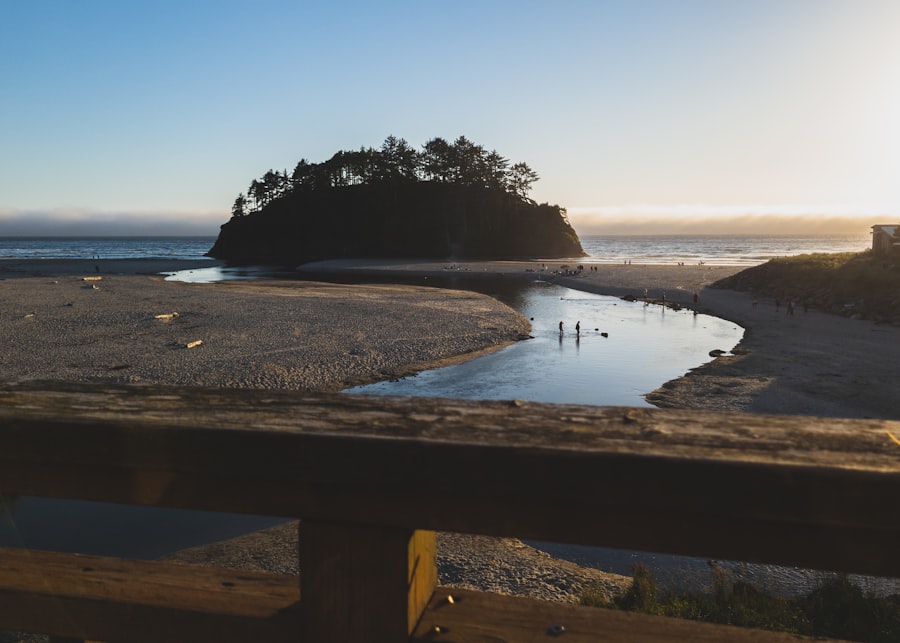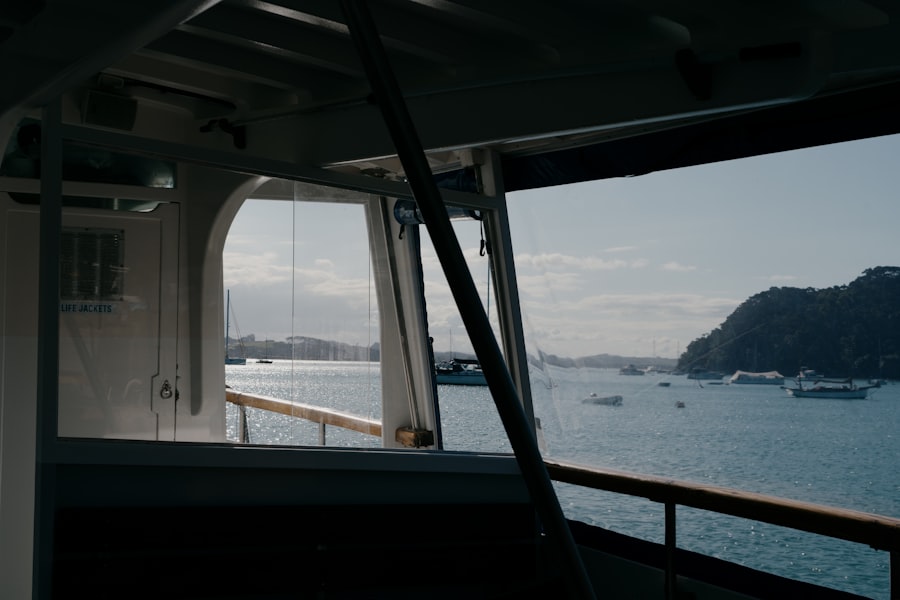The Drake Passage, a body of water that separates South America from Antarctica, is renowned for its tumultuous seas and unpredictable weather. Named after the English explorer Sir Francis Drake, who navigated these waters in the late 16th century, the passage has become a focal point for adventurers, researchers, and tourists alike. Stretching approximately 600 kilometers (370 miles) from Cape Horn to the South Shetland Islands, the Drake Passage is not only a vital maritime route but also a gateway to one of the most pristine and remote regions on Earth.
This passage is often described as one of the most challenging waterways to navigate due to its fierce winds and strong currents. The confluence of the Atlantic and Pacific Oceans creates a unique environment that can shift from calm to chaotic in a matter of moments. For many, crossing the Drake Passage is a rite of passage, a test of endurance and resilience that offers a glimpse into the raw power of nature.
As travelers embark on this journey, they are not only traversing a physical space but also stepping into a realm steeped in history and adventure.
Key Takeaways
- The Drake Passage is a body of water between South America’s Cape Horn and the South Shetland Islands of Antarctica.
- The geography and climate of the Drake Passage are characterized by strong winds, rough seas, and unpredictable weather conditions.
- The Drake Passage has a rich historical significance as a route for exploration and trade, with connections to famous expeditions and explorations.
- Navigating the Drake Passage presents challenges such as extreme weather, strong currents, and icebergs, making it one of the most treacherous sea crossings in the world.
- Safety precautions for crossing the Drake Passage include choosing the right vessel, being prepared for rough seas, and following safety guidelines for wildlife encounters.
Understanding the Geography and Climate of the Drake Passage
Geographically, the Drake Passage is characterized by its deep waters and rugged underwater topography. The seabed features a series of ridges and valleys that contribute to the complex ocean currents in the area. The passage connects the Southern Ocean with the Atlantic Ocean, making it a crucial conduit for marine life and oceanic circulation.
The waters are often cold, with temperatures averaging around 2 to 5 degrees Celsius (36 to 41 degrees Fahrenheit), which plays a significant role in the region’s climate and ecology. The climate of the Drake Passage is notoriously volatile, influenced by various atmospheric conditions and oceanic patterns. Storms can arise suddenly, bringing with them high winds and towering waves that can reach heights of up to 15 meters (49 feet).
This unpredictability makes the passage both awe-inspiring and treacherous. The region experiences a mix of weather patterns, including rain, snow, and fog, which can further complicate navigation. Understanding these geographical and climatic factors is essential for anyone planning to cross this formidable stretch of water.
Historical Significance of the Drake Passage

The historical significance of the Drake Passage cannot be overstated. It has served as a critical route for explorers, scientists, and traders for centuries. Sir Francis Drake’s expedition in 1578 marked one of the first recorded crossings of this passage, paving the way for future explorations of Antarctica and beyond.
His journey not only contributed to the mapping of uncharted territories but also ignited interest in the southernmost continent, leading to subsequent expeditions that would shape our understanding of polar regions. In addition to its role in exploration, the Drake Passage has been pivotal in maritime trade. During the Age of Sail, ships traversed these waters to connect Europe with the Americas and Asia.
The passage became a vital link for whalers, sealers, and later, scientific expeditions that sought to study the unique ecosystems found in Antarctic waters. The rich history associated with the Drake Passage reflects humanity’s enduring quest for knowledge and adventure, making it a significant landmark in maritime history.
Challenges of Navigating the Drake Passage
| Challenge | Description |
|---|---|
| Strong Winds | The passage is known for its strong westerly winds, often reaching gale force, which can make navigation difficult. |
| Rough Seas | The combination of strong winds and currents can lead to rough seas, causing discomfort for passengers and crew. |
| Narrow Passage | The Drake Passage is a narrow stretch of water between South America’s Cape Horn and the South Shetland Islands, making navigation challenging. |
| Icebergs | During certain times of the year, icebergs can pose a threat to navigation in the Drake Passage. |
Navigating the Drake Passage presents numerous challenges that can test even the most seasoned mariners. The combination of strong currents, unpredictable weather patterns, and shifting icebergs creates an environment that demands respect and caution. The infamous “Drake Shake,” a term used to describe the rough seas often encountered in this region, can lead to dangerous conditions for vessels of all sizes.
Mariners must be prepared for sudden changes in weather that can transform calm waters into turbulent seas within minutes. Moreover, the passage’s remoteness adds another layer of difficulty. In case of emergencies or mechanical failures, assistance may be hours or even days away.
This isolation requires vessels to be well-equipped with safety gear and communication devices to ensure that help can be summoned if needed. Navigators must also possess a deep understanding of maritime charts and be skilled in using navigational tools to safely traverse this challenging waterway.
Safety Precautions for Crossing the Drake Passage
Given the inherent risks associated with crossing the Drake Passage, safety precautions are paramount. Mariners are advised to conduct thorough pre-voyage preparations, including checking weather forecasts and ensuring that all safety equipment is in working order. Life jackets, flares, and emergency beacons should be readily accessible, while communication devices must be tested before departure.
Additionally, vessels should carry sufficient supplies of food, water, and medical kits to address any potential emergencies during the crossing. Training and experience play crucial roles in ensuring safety while navigating these waters. Crew members should be well-versed in emergency procedures and capable of responding effectively to various scenarios that may arise during the journey.
Regular drills can help reinforce these skills and build confidence among crew members. Ultimately, a combination of preparation, knowledge, and vigilance is essential for safely crossing the unpredictable waters of the Drake Passage.
Wildlife Encounters in the Drake Passage

The Drake Passage is not only known for its challenging navigation but also for its rich biodiversity. The waters teem with marine life, making it an exciting destination for wildlife enthusiasts. Whales are among the most sought-after sightings in this region; species such as humpback whales, orcas, and minke whales frequently traverse these waters during their migratory patterns.
Observing these majestic creatures in their natural habitat is a highlight for many travelers crossing the passage. In addition to whales, seabirds are abundant in the Drake Passage.
The presence of these birds indicates a healthy marine ecosystem and adds to the overall experience of crossing this remarkable body of water. For those fortunate enough to witness these wildlife encounters, the Drake Passage offers an unforgettable glimpse into nature’s wonders.
Choosing the Right Vessel for Crossing the Drake Passage
Selecting an appropriate vessel for crossing the Drake Passage is crucial for ensuring safety and comfort during the journey. Various types of vessels are available for this adventure, ranging from large cruise ships equipped with stabilizers to smaller expedition vessels designed for navigating rough seas. Each option has its advantages and disadvantages; larger ships may offer more amenities but can be less maneuverable in challenging conditions, while smaller vessels provide a more intimate experience but may lack some comforts.
When choosing a vessel, travelers should consider factors such as their level of experience with sea travel, desired amenities, and budget constraints. It is also essential to research operators’ safety records and ensure that they adhere to industry standards for navigating these treacherous waters. Ultimately, selecting the right vessel can significantly enhance the overall experience of crossing the Drake Passage.
Tips for Dealing with Seasickness in the Drake Passage
Seasickness is a common concern for many travelers embarking on a journey across the Drake Passage. The unpredictable nature of these waters can lead to discomfort for even seasoned sailors. To mitigate seasickness, travelers are encouraged to take preventive measures before setting sail.
Over-the-counter medications such as antihistamines or prescription remedies can help alleviate symptoms if taken prior to departure. In addition to medication, adopting certain strategies during the crossing can also prove beneficial. Staying hydrated and consuming light meals can help maintain energy levels while minimizing nausea.
Finding a stable spot on deck or inside the vessel where one can focus on a fixed point on the horizon may also help ease symptoms. Engaging in light activities or breathing exercises can further distract from feelings of discomfort. By preparing adequately and employing these techniques, travelers can enhance their chances of enjoying their journey across this remarkable passage.
Navigation and Route Planning in the Drake Passage
Effective navigation and route planning are essential components of successfully crossing the Drake Passage. Mariners must familiarize themselves with nautical charts that detail water depths, currents, and potential hazards such as icebergs or shallow areas. Understanding tidal patterns and prevailing winds is also crucial for optimizing travel time and ensuring safety during transit.
In addition to traditional navigation methods, modern technology has revolutionized route planning in this region. GPS systems and advanced weather forecasting tools allow navigators to make informed decisions about their course based on real-time data. However, reliance on technology should not replace fundamental navigational skills; experienced mariners know that adaptability is key when faced with changing conditions at sea.
Famous Expeditions and Explorations in the Drake Passage
Throughout history, numerous famous expeditions have traversed the Drake Passage, each contributing to our understanding of this remote region. One notable expedition was led by Ernest Shackleton in 1914 when he attempted to cross Antarctica via this treacherous route aboard his ship Endurance. Although Shackleton’s journey was fraught with challenges that ultimately led to his ship becoming trapped in ice, his leadership and determination have become legendary tales of survival against all odds.
Another significant exploration was conducted by James Cook in 1773 when he became one of the first Europeans to navigate these waters extensively. Cook’s voyages provided valuable insights into Antarctic geography and marine life while laying groundwork for future explorations in polar regions. These expeditions not only highlight human resilience but also underscore humanity’s enduring fascination with exploring uncharted territories.
The Future of Navigating the Drake Passage
As climate change continues to impact global weather patterns and oceanic conditions, navigating the Drake Passage may evolve significantly in coming years. Melting ice caps could alter traditional migratory routes for marine life while potentially opening new pathways for shipping traffic through previously inaccessible areas. This shift presents both opportunities and challenges; increased maritime activity could lead to greater environmental concerns while also facilitating scientific research in previously unexplored regions.
Furthermore, advancements in technology may enhance navigation safety within this challenging waterway. Innovations such as autonomous vessels equipped with sophisticated sensors could revolutionize how mariners approach crossing the Drake Passage while minimizing risks associated with human error or adverse weather conditions. As humanity continues its quest for knowledge about our planet’s most remote areas, navigating this iconic passage will undoubtedly remain an integral part of our collective journey into uncharted waters.
The Drake Passage is renowned for its treacherous ocean crossing, a formidable challenge for even the most seasoned sailors. This narrow body of water between the southern tip of South America and Antarctica is notorious for its unpredictable weather and rough seas. For those interested in learning more about the challenges and adventures associated with navigating this perilous route, a related article can be found on MyGeoQuest. This article delves into the history and experiences of those who have braved the Drake Passage. You can read more about it by visiting this page.
WATCH NOW! Drake Passage: Earth’s Deadliest Waters Revealed
FAQs
What is the Drake Passage?
The Drake Passage is the body of water between the southern tip of South America and the northern tip of the Antarctic Peninsula. It connects the southwestern part of the Atlantic Ocean with the southeastern part of the Pacific Ocean.
Why is the Drake Passage considered treacherous?
The Drake Passage is known for its rough seas, strong winds, and unpredictable weather conditions. The convergence of the Atlantic, Pacific, and Southern oceans creates a unique and challenging environment for ships crossing the passage.
What makes the Drake Passage crossing difficult?
The combination of strong winds, large waves, and potential for severe storms makes the Drake Passage crossing difficult for ships. The area is also known for its icebergs and ice floes, adding to the navigational challenges.
Are there any safety concerns when crossing the Drake Passage?
Due to the challenging conditions, safety concerns include the risk of ship damage, capsizing, or encountering ice hazards. Ships crossing the Drake Passage must be well-equipped and prepared for the harsh environment.
What are some tips for crossing the Drake Passage safely?
To cross the Drake Passage safely, it is important for ships to have experienced crew, appropriate safety equipment, and a well-maintained vessel. It is also advisable to plan the crossing during the most favorable weather conditions to minimize risks.
